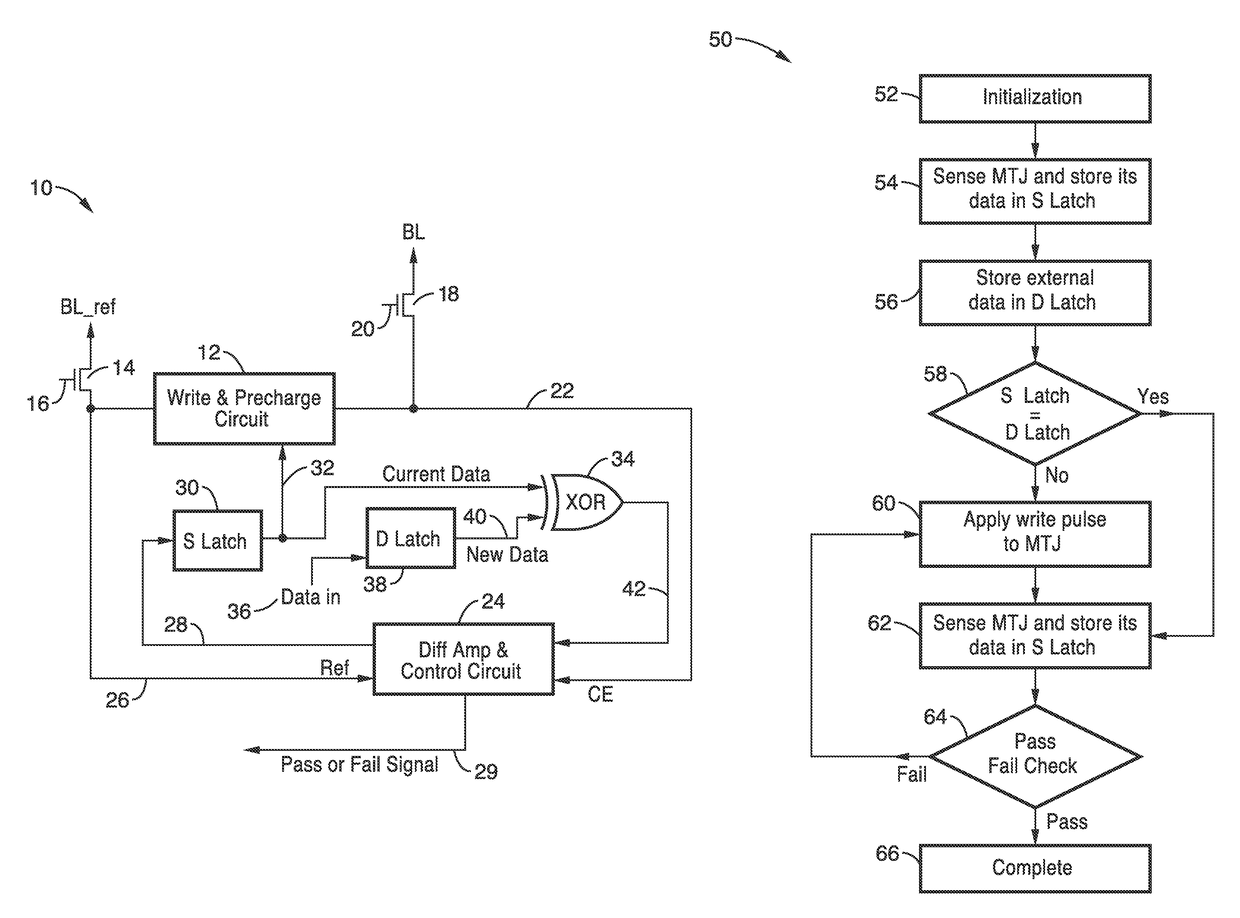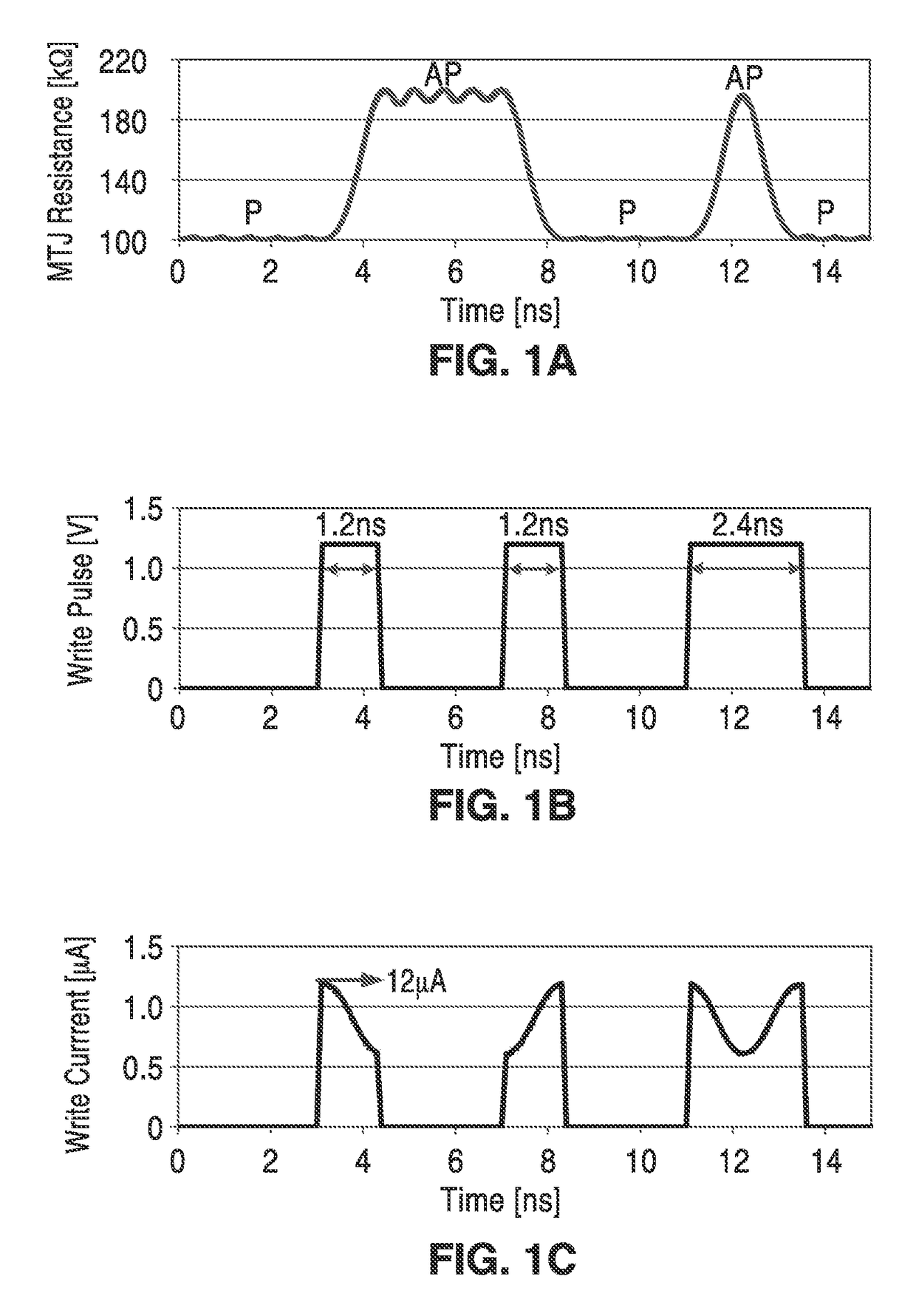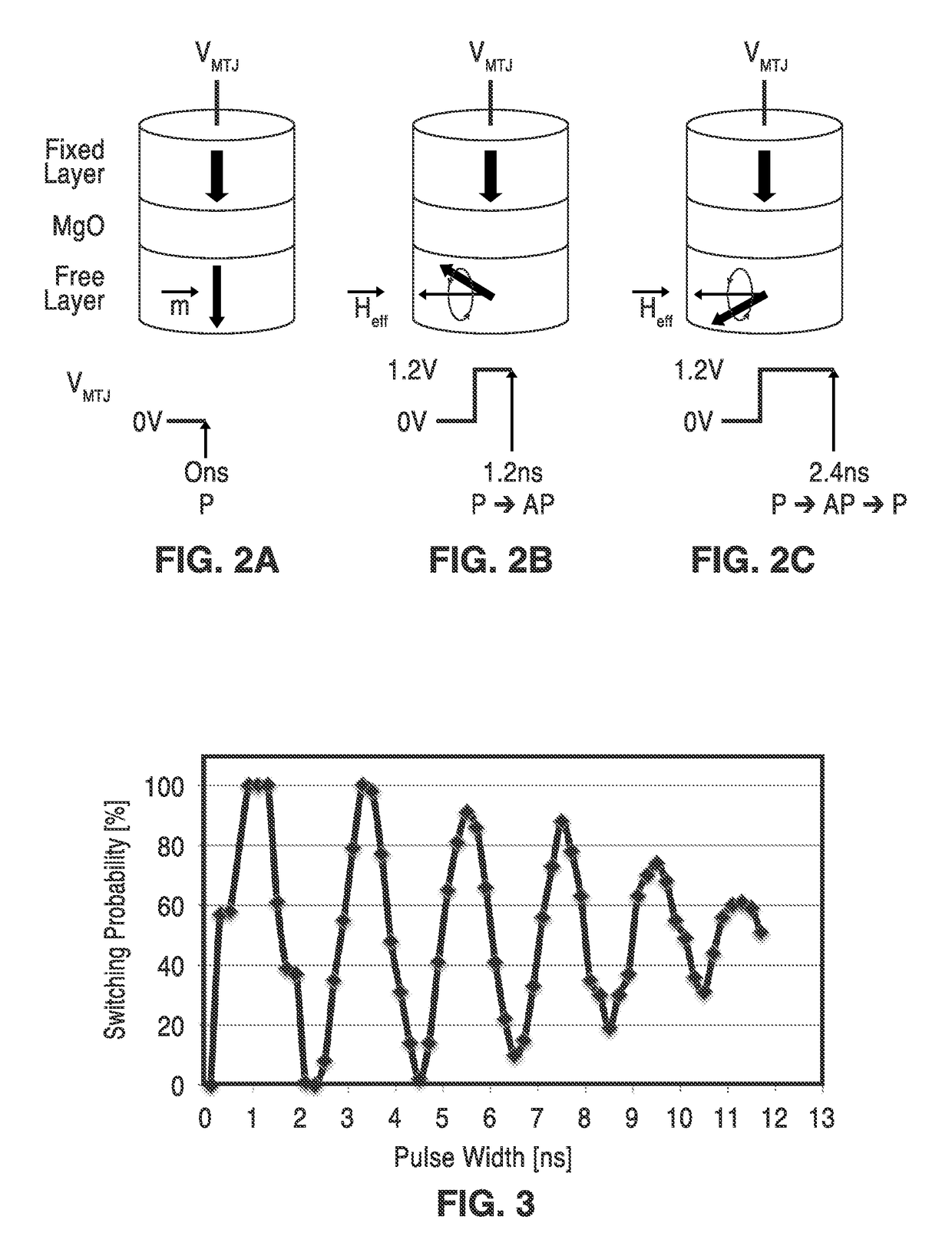Fast and low-power sense amplifier and writing circuit for high-speed MRAM
a writing circuit and high-speed mram technology, applied in information storage, static storage, digital storage, etc., can solve the problems of small available sensing margin, difficult to determine the switching direction, and many new challenges, and achieve fast read and write operations, reduce write power consumption, and minimize the bit error rate
- Summary
- Abstract
- Description
- Claims
- Application Information
AI Technical Summary
Benefits of technology
Problems solved by technology
Method used
Image
Examples
Embodiment Construction
1. Introduction
[0025]The present technology provides a number of benefits for MTJ memory cells including, but not limited to, the following abilities: (i) to enable reliable precessional programming for high-speed operation, by reducing the BER, while allowing for a large write error rate (WER) (up to 1%) of the precessional switching process; (ii) to reduce write power by utilizing a pre-read process for eliminating redundant writes; and (iii) to increase the sensing margin for reliable read operation by using a current feedback circuit.
[0026]In the present disclosure, the bit error rate (BER) is defined as the number of bit errors divided by the total number of programmed bits after a full data program operation. Each full data program operation, in turn, may consist of multiple write operations into an individual bit. The acceptable bit error rate (ABER) is the maximum BER which can be corrected by error-correction code (ECC) techniques. The write error rate (WER), in turn, is de...
PUM
 Login to View More
Login to View More Abstract
Description
Claims
Application Information
 Login to View More
Login to View More - R&D
- Intellectual Property
- Life Sciences
- Materials
- Tech Scout
- Unparalleled Data Quality
- Higher Quality Content
- 60% Fewer Hallucinations
Browse by: Latest US Patents, China's latest patents, Technical Efficacy Thesaurus, Application Domain, Technology Topic, Popular Technical Reports.
© 2025 PatSnap. All rights reserved.Legal|Privacy policy|Modern Slavery Act Transparency Statement|Sitemap|About US| Contact US: help@patsnap.com



